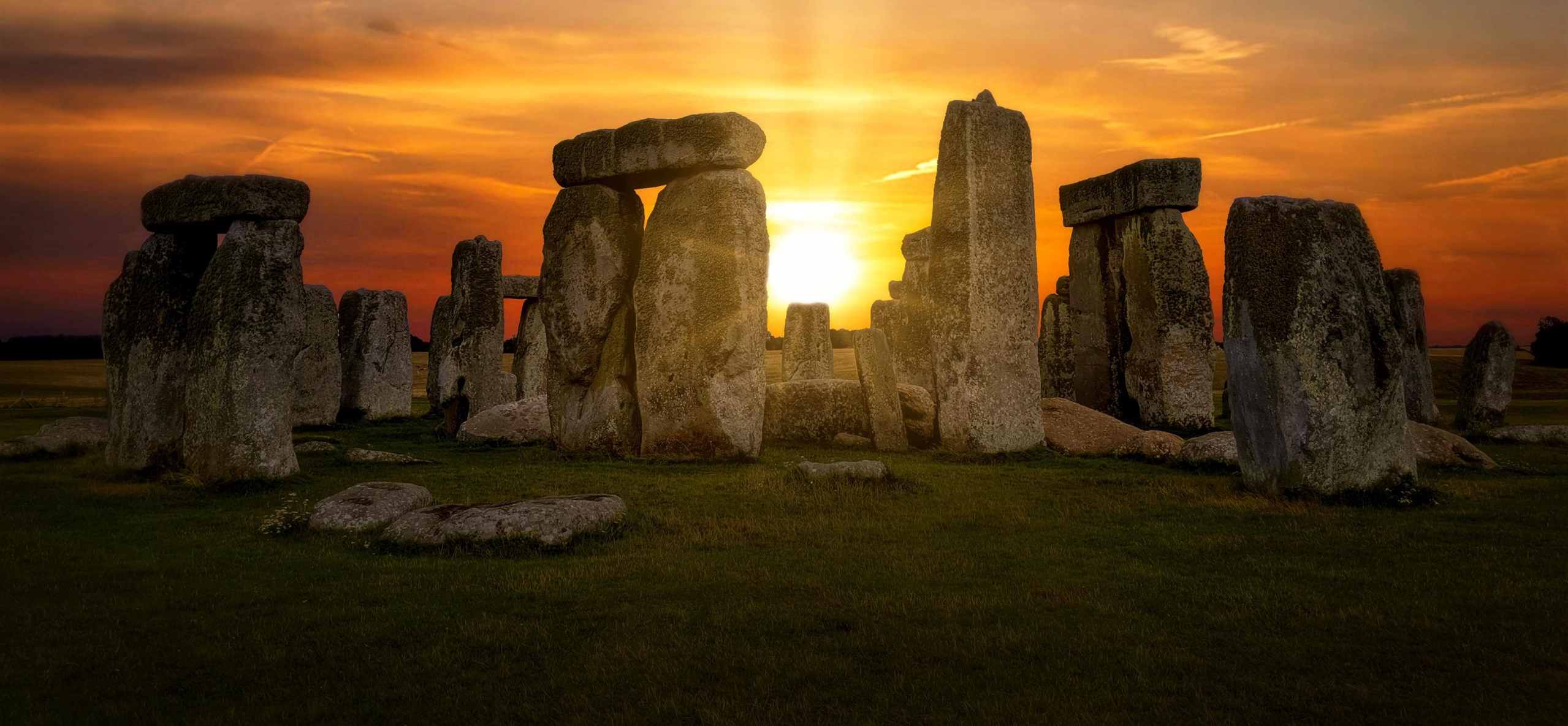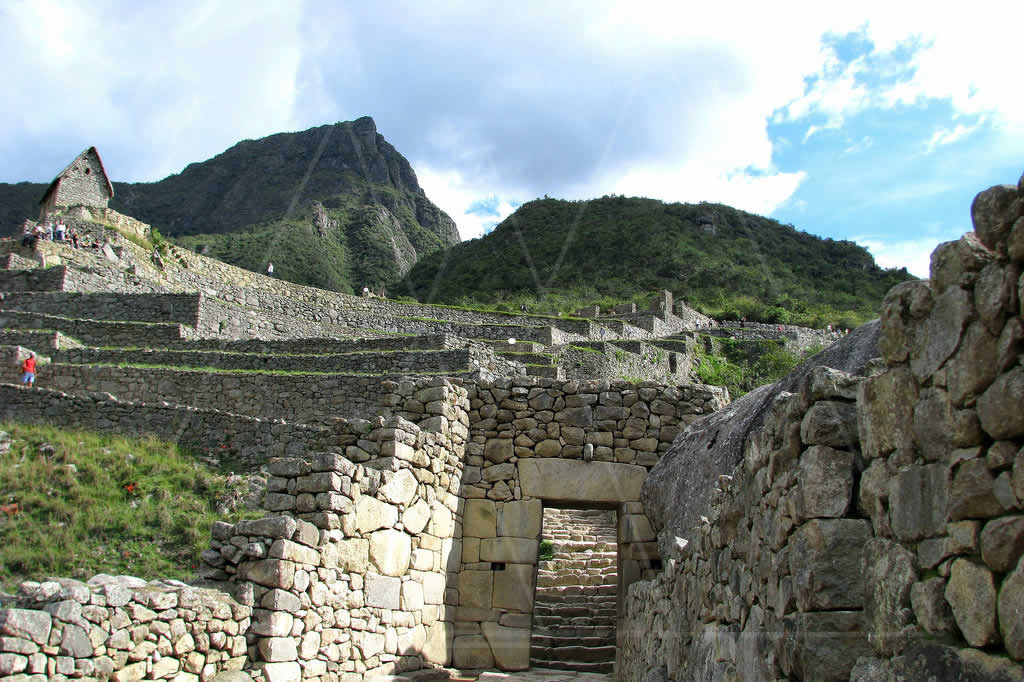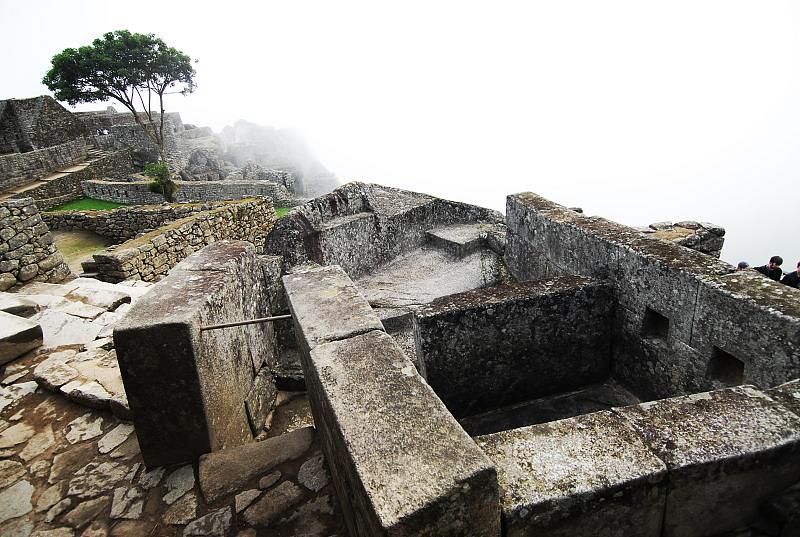
Machu Picchu
Ancient city, Peru
Machu Picchu, also spelled Machupijchu, site of ancient Inca ruins located about 50 miles (80 km) northwest of Cuzco, Peru, in the Cordillera de Vilcabamba of the Andes Mountains. It is perched above the Urubamba River valley in a narrow saddle between two sharp peaks—Machu Picchu (“Old Peak”) and Huayna Picchu (“New Peak”)—at an elevation of 7,710 feet (2,350 metres). One of the few major pre-Columbian ruins found nearly intact, Machu Picchu was designated a UNESCO World Heritage site in 1983.

Although the site escaped detection by the Spaniards, it may have been visited by the German adventurer Augusto Berns in 1867. However, Machu Picchu’s existence was not widely known in the West until it was “discovered” in 1911 by the Yale University professor Hiram Bingham, who was led to the site by Melchor Arteaga, a local Quechua-speaking resident. Bingham had been seeking Vilcabamba (Vilcapampa), the “lost city of the Incas,” from which the last Inca rulers led a rebellion against Spanish rule until 1572. He cited evidence from his 1912 excavations at Machu Picchu, which were sponsored by Yale University and the National Geographic Society, in his labeling of the site as Vilcabamba; however, that interpretation is no longer widely accepted. (Nevertheless, many sources still follow Bingham’s precedent and erroneously label Machu Picchu as the “lost city of the Incas.”) Evidence later associated Vilcabamba with another ruin, Espíritu Pampa, which was also discovered by Bingham. In 1964 Espíritu Pampa was extensively excavated under the direction of the American explorer Gene Savoy. The site was much deteriorated and overgrown with forest, but Savoy uncovered remains there of some 300 Inca houses and 50 or more other buildings, as well as extensive terraces, proving that Espíritu Pampa was a much larger settlement.

Machu Picchu was further excavated in 1915 by Bingham, in 1934 by the Peruvian archaeologist Luis E. Valcarcel, and in 1940–41 by Paul Fejos. Additional discoveries throughout the Cordillera de Vilcabamba have shown that Machu Picchu was one of a series of pucaras (fortified sites), tambos (travelers’ barracks, or inns), and signal towers along the extensive Inca foot highway. The dwellings at Machu Picchu were probably built and occupied from the mid-15th to the early or mid-16th century. Machu Picchu’s construction style and other evidence suggest that it was a palace complex of the ruler Pachacuti Inca Yupanqui (reigned c. 1438–71). Several dozen skeletons were excavated there in 1912, and, because most of those were initially identified as female, Bingham suggested that Machu Picchu was a sanctuary for the Virgins of the Sun (the Chosen Women), an elite Inca group. Technology at the turn of the 21st-century, however, identified a significant proportion of males and a great diversity in physical types. Both skeletal and material remains now suggest to scholars that Machu Picchu served as a royal retreat. The reason for the site’s abandonment is also unknown, but lack of water may have been a factor.

The high level of preservation and the general layout of the ruin are remarkable. Its southern, eastern, and western portions are surrounded by dozens of stepped agricultural terraces formerly watered by an aqueduct system. Some of those terraces were still being used by local Indians when Bingham arrived in 1911. Walkways and thousands of steps, consisting of stone blocks as well as footholds carved into underlying rock, connect the plazas, the residential areas, the terraces, the cemetery, and the major buildings. The Main Plaza, partly divided by wide terraces, is at the north-central end of the site. At the southeastern end is the only formal entrance, which leads to the Inca Trail.

Few of Machu Picchu’s white granite structures have stonework as highly refined as that found in Cuzco, but several are worthy of note. In the southern part of the ruin is the Sacred Rock, also known as the Temple of the Sun (it was called the Mausoleum by Bingham). It centres on an inclined rock mass with a small grotto; walls of cut stone fill in some of its irregular features. Rising above the rock is the horseshoe-shaped enclosure known as the Military Tower. In the western part of Machu Picchu is the temple district, also known as the Acropolis. The Temple of the Three Windows is a hall 35 feet (10.6 metres) long and 14 feet (4.2 metres) wide with three trapezoidal windows (the largest known in Inca architecture) on one wall, which is built of polygonal stones. It stands near the southwestern corner of the Main Plaza. Also near the Main Plaza is the Intihuatana (Hitching Post of the Sun), a uniquely preserved ceremonial sundial consisting of a wide pillar and pedestal that were carved as a single unit and stand 6 feet (1.8 metres) tall. In 2000 this feature was damaged during the filming of a beer commercial. The Princess’s Palace is a bi-level structure of highly crafted stonework that probably housed a member of the Inca nobility. The Palace of the Inca is a complex of rooms with niched walls and a courtyard. At the other end of Machu Picchu, another path leads to the famous Inca Bridge, a rope structure that crosses the Urubamba River. Many other ruined cities—like that atop the dark peak of Huayna Picchu, which is accessible by a lengthy, precipitous stairway and trail—were built in the region; Machu Picchu is only the most extensively excavated of these.

Machu Picchu is the most economically important tourist attraction in Peru, bringing in visitors from around the world. For this reason the Peruvian government wishes to repatriate the materials taken by Bingham to Yale. The ruins are commonly reached in a day trip from Cuzco by first taking a narrow-gauge railway and then ascending nearly 1,640 feet (500 metres) from the Urubamba River valley on a serpentine road. Smaller numbers of visitors arrive by hiking the Inca Trail. The portion of the trail from the “km 88” train stop to Machu Picchu is normally hiked in three to six days. It is composed of several thousand stone-cut steps, numerous high retaining walls, tunnels, and other feats of classical engineering; the route traverses a wide range of elevations between about 8,530 and 13,780 feet (2,600 and 4,200 metres), and it is lined with Inca ruins of various types and sizes. At Machu Picchu there is a hotel with a restaurant, and thermal baths are at the nearby village of Aguas Calientes. The Inca Bridge and other parts of Machu Picchu were damaged by a forest fire in August 1997, but restoration was begun immediately afterward. Concern for the damage caused by tourism was heightened by discussion of the building of a cable-car link to the site.
